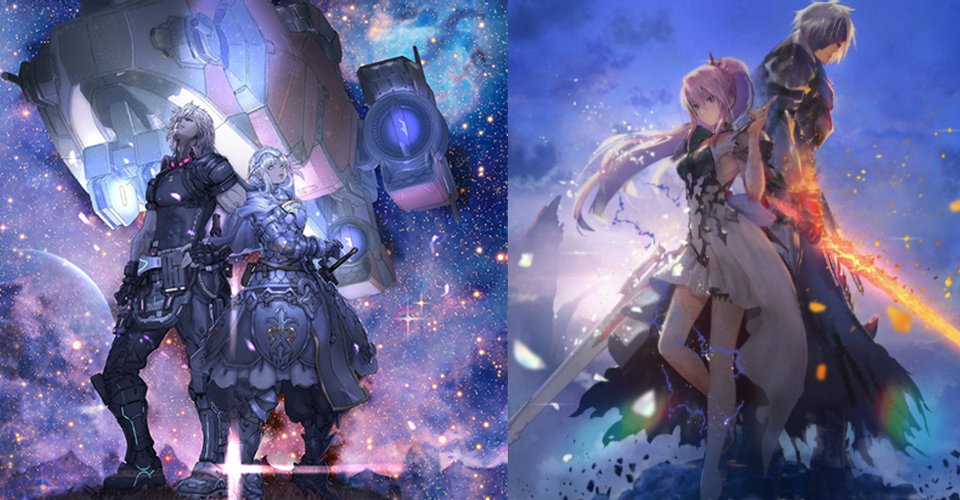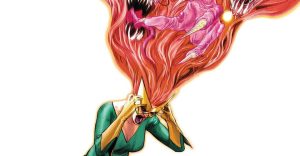What Star Ocean: The Divine Force Could Learn From Tales Of Arise

In a surprise announcement, Star Ocean: The Divine Force was recently revealed during October’s PlayStation State of Play broadcast. Given the details known so far, as well as the fact that it will be releasing as part of the series’ 25th Anniversary, the comparisons to Tales of Arise are inevitable. While both series have been around for a quarter of a century, they also have a lot in common in terms of gameplay and storytelling. However, there are quite a few things Star Ocean: The Divine Force could learn from Tales of Arise.
The first Tales Of game, Tales of Phantasia, came out in 1995 on the Super Famicon in Japan – while the first Star Ocean debuted the following year. Both were action RPGs with combat that felt different from the turn-based Dragon Quest games or the ATB system found in Final Fantasy 6. The biggest difference between them was arguably their settings – while Tales Of games remained mostly within the high fantasy genre, Star Ocean leaned more into Star Trek-like science fiction. As time went on, these series leaned even more into those genres, which set them apart even more.
Now, 25 years since that first Tales Of game was released, Tales of Arise has been released to critical acclaim and commercial success. Even in the West, where some JRPG series have struggled to find a foothold, Tales of Arise has become a bit of a breakout hit, celebrated by longtime fans and enticing newcomers to try out the series for themselves. It’s in an enviable position, which is why the team at Tri-Ace behind Star Ocean should consider learning from it before The Divine Force‘s release next year.
What Star Ocean & Tales Of Arise Have In Common

Even on the surface – and for those who have perhaps never played a game in either series – both Star Ocean and Tales Of appear to have a lot in common. The action combat, similar anime designs, and 3D environments all appear similar. There are deeper connections as well – both series have hidden social links and cutscenes, for example, with Star Ocean offering Private Actions to the Skits seen in Tales games. Tales has Artes, whereas Star Ocean relies on Symbology.
Even beyond this, the recent trailer for Star Ocean: The Divine Force looks like it will have a lot in common with Tales of Arise. The Divine Force will focus on two protagonists – one male and one female – much like Tales of Arise‘s narrative is framed around Alphen and Shionne. Admittedly, other Star Ocean games have been set up this way (Fayt and Sophia from Till the End of Time, for instance) but the comparisons are still hard to ignore here. Even the environments shown off in the announcement trailer for The Divine Force resembled ones found in Tales of Arise.
Of course, both games were likely in development at the same time, which means it’s highly unlikely The Divine Force simply copied Tales of Arise, even though Star Ocean‘s next game will come out in 2022 – a year after Tales of Arise’s release date. Despite these similarities on the surface, these aspects have mostly been with each series from the beginning. However, if Star Ocean: The Divine Force is to succeed, it wouldn’t hurt to borrow a few things from Tales of Arise – and it could help revitalize the long-running sci-fi JRPG series.
How Star Ocean: The Divine Force Can Build Upon Tales Of Arise’s Success

Both Star Ocean and Tales Of have been putting out games for decades, although neither has quite hit the global popularity of JRPG series like Final Fantasy and Dragon Quest. For Star Ocean, though, success is more important to its longevity, especially given its more recent entries. Fans were somewhat underwhelmed with the fourth entry (The Last Hope), and the fifth game (Integrity and Faithlessness) got a lot of negative feedback and marked the first game in the series to release after its creative director left. So, the chances of a new Star Ocean game seemed pretty slim, which is what made the reveal for The Divine Force during October’s State of Play so surprising (and exciting).
Most of Tales of Arise‘s success stems from blending the old with the new. It kept many of its combat mechanics but improved and innovated them to make battles more fast-paced, streamlined, and fun. The graphics overhaul makes the game look gorgeous but still kept the series’ signature anime aesthetic. The characters still felt like archetypes but were more in-depth than some found in more recent entries like Tales of Zestiria, and both leads – Alphen and Shionne – felt particularly well-developed. In short, Arise modernized the series while still remaining true to its roots.
This is at the heart of what Star Ocean: The Divine Force should learn from Tales of Arise. In many respects, Integrity and Faithlessness felt like a small, oversimplified version of previous games. It was like an away mission in Star Trek when fans had come to expect something bigger. Most of the story took place on a single planet with more of a high fantasy feel, which took away from the sprawling intergalactic epic fans had gotten used to, despite feeling like a nice callback to earlier entries in the series.
With both JRPG series are celebrating their 25th Anniversaries, it’s hard not to compare the history of the two – and to look ahead at what could be in store for each of them. From the looks of things, Star Ocean: The Divine Force appears like it will return the series to the planet-hopping space opera seen in fan-favorites like Till the End of Time. If the game can manage to improve its graphics, characters, and combat – the way Tales of Arise did for the Tales series – then perhaps it can breathe new life into the Star Ocean series and bring it into the “next-gen” era.
About The Author


















